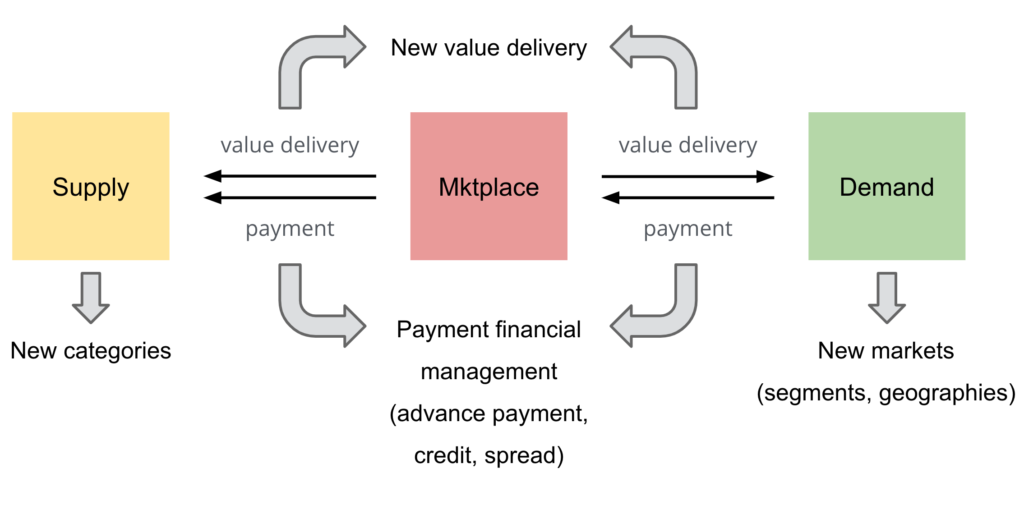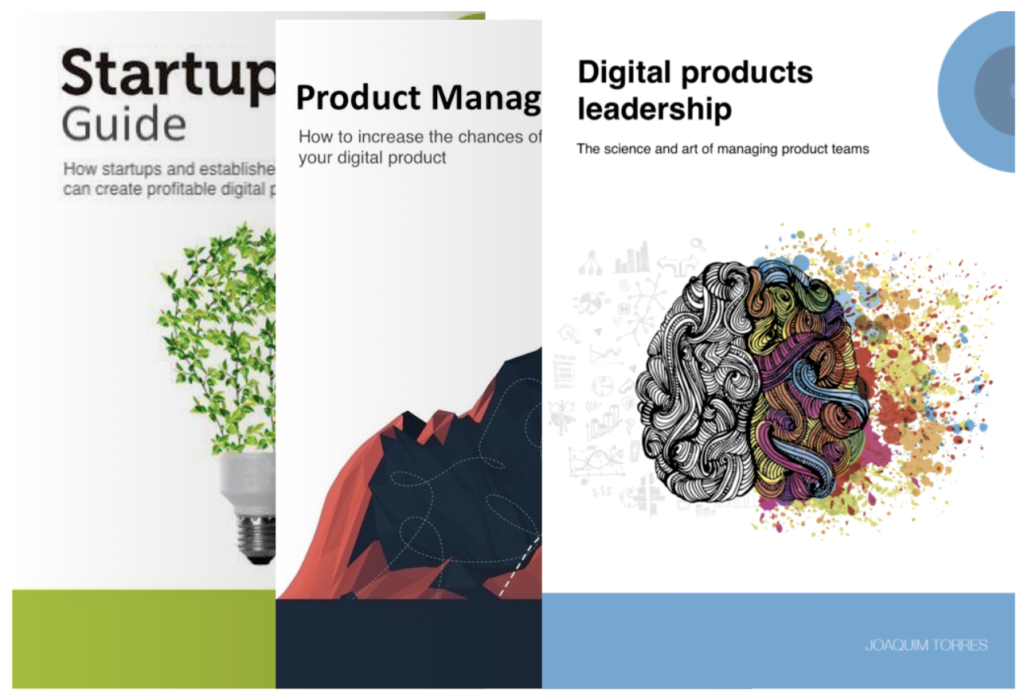Let’s talk about digital product revenue
3 de September, 2019Why the hurry to launch an MVP?
22 de September, 2019To answer this question we need to understand the dynamics of a marketplace. Basically, there are 3 types of elements in a marketplace:
- Supply: goods or services available for consumption
- Demand: people or businesses that may need goods or services offered by the supply
- Marketplace: where demand finds supply and a transaction happens
These 3 elements relate to each other in the following manner:
- Value delivery: marketplace delivers value to both demand and supply. The value delivered to supply is people or businesses interested in its goods or services. The value delivered to demand is a varied number of goods and services suppliers.
- Payment: in order to have access to the goods and services offered by the suppliers, the demand pays the marketplace and marketplace pays the supply. Normally the marketplace retains a fee per transaction. This fee can be fixed or a percentage of the payment.

Let’s analyze Uber as an example. Supply is the drivers. Demand is the riders. The marketplace is Uber. Uber delivers new riders to drivers and delivers transportation services to riders through its supply of drivers. Riders pay Uber who then pay drivers and retain a fee.
Another example is Uber Eats, a 3-sided marketplace where supply is both the restaurants and the drivers who deliver the food to the user. Demand is the users who order food through Uber Eats, which is the marketplace. Uber Eats delivers demand to both restaurants and drivers and delivers a food ordering service to its users. Uber Eats charges the user and pays both restaurants and drivers, retaining a fee. In this case, Uber Eats connects 2 types of supply (restaurants and drivers) to one type of demand (users).
A 3rd example is Gympass, a 3-sided marketplace where supply is gyms and studios and demand are companies and their employees. Gympass delivers new users to its supply while delivering a network of gyms and studios that are offered by the companies as a corporate benefit to their employees. Companies and employees pay a fee to Gympass, which pays gyms and studios. In this case, Gympass connects one supply (gyms and studios) to two interconnected types of demands (companies and their employees).
Expanding the marketplace
So you run a marketplace and want to expand it. There are some different paths you can take to expand your marketplace:
- Demand diversification: you can offer the goods and services of your marketplace to new segments and geographies. Uber did that in its international expansion. Uber also offered its transportation services to companies, besides its regular offer to end-users.
- Supply diversification: you can offer new goods and services to your demand. Uber did this with Uber Eats. Amazon started out offering only books. Now it offers almost anything.
- New value delivery: you can offer new value to both your supply and your demand. Uber offers many services to its drivers like car rental, car maintenance, phone plans, and health insurance. iFood, a Brazilian company similar to Uber Eats, offers a PoS system to its affiliated restaurants. MercadoLibre, an Argentinean marketplace similar to eBay, offers to its sellers MercadoShops, an eCommerce site builder and becommerce, a back-office management solution.
- Payment financial management: since the payment from demand to supply goes through the marketplace, you can offer financial services to both your demand and your supply like advance payment and credit, and you can manage the spread. iFood is offering through its app the ability for its users to pay the bill when they are in the restaurant. Uber partnered with Intuit to offer financial management services to its drivers. Both MercadoLibre and eBay offer a payment solution for its sellers and buyers. MercadoLibre offers MercadoPago and eBay acquired Paypal. Most recently MercadoLibre decided to offer loans to its sellers in Brazil and Mexico.
The image below shows the 4 types of marketplace expansion.

So there you have it, 4 types of marketplace expansion. These 4 types are not excluding. You can explore all 4 options simultaneously, but remember that each can be a new business on its own, so be careful not to distract too many resources from your existing marketplace business.
Product leadership advisor
I’ve been helping several product leaders (CPOs, heads of product, CTOs, CEOs, tech founders, and heads of digital transformation) extract more value and results from their digital products. Check here how I can help you and your company.
Newsletter
I write regularly about product management, product development, digital product leadership, and digital transformation. You can receive a notification whenever I publish a new article, without depending on any social network algorithms to notify you! Just subscribe to my newsletter:
[newsletter]
Digital Product Management Books
Do you work with digital products? Do you want to know more about how to manage a digital product to increase its chances of success, solve its user’s problems and achieve the company objectives? Check out my Digital Product Management bundle with my 3 books where I share what I learned during my 30+ years of experience in creating and managing digital products:
- Startup Guide: How startups and established companies can create profitable digital products
- Product Management: How to increase the chances of success of your digital product
- Leading Product Development: The art and science of managing product teams
You can also acquire the books individually, by clicking on their titles above.

